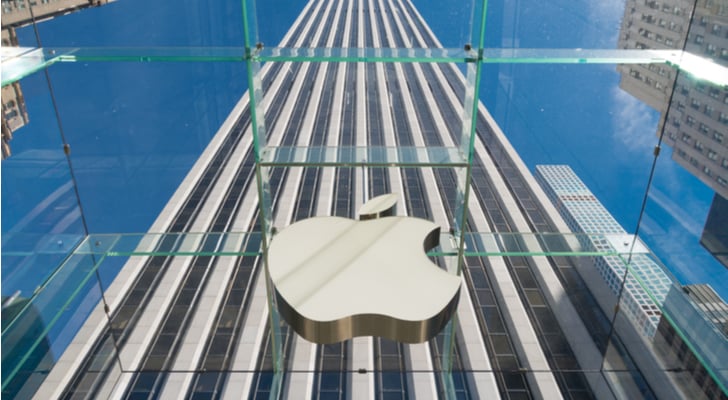Apple Inc. (NASDAQ:AAPL) isn’t as emotionally driven a stock as say, Advanced Micro Devices, Inc. (NASDAQ:AMD), Tesla Inc (NASDAQ:TSLA) or Chesapeake Energy Corporation (NYSE:CHK). But that doesn’t mean AAPL stock doesn’t have a fierce set of bears and bulls, the latter of which has been winning the battle.
Over the past 12 months, AAPL has climbed an eye-popping 47%. Why’s that so impressive? Considering its $910 billion market cap, Apple stock is just a stone’s throw from $1 trillion in market cap.
In order for Apple stock to hit $1 trillion, its share price needs to climb about 10%. A run to $200 per share would be a 13% rally, giving Apple a market cap of $1.028 trillion.
I would surely expect the market to give AAPL some resistance as it nears the historical milestone. No public company has eclipsed the $1 trillion market in the U.S. Where does that leave investors though?
Can Apple Stock Hit $1 Trillion?
Yes, for three reasons.
First, Apple is not BlackBerry Ltd (NYSE:BB). That may seem like an odd catalyst at first, but it is. Just how Facebook Inc (NASDAQ:FB) has not gone the way of Myspace, Apple has not gone the way of BlackBerry. Its hardware is more relevant than ever, as iPhones continue to remain the phone of choice for millions.
With fat margins and plenty of demand from consumers, this profit drops right down to Apple’s bottom line. Further, it’s branched away from iPhones to tablets, watches and the all-important services revenue.
As this high-margin services revenue continues to churn out fast growth, investors should be willing to pay a higher valuation as Apple becomes more software oriented.
Which brings me to my next point: Valuation. One might think that a 47% one-year rally has left AAPL stock expensive. That is not the case, however.
Shares trade at just 14.5 times forward earnings, vastly below big-cap tech peers like Alphabet Inc (NASDAQ:GOOGL, NASDAQ:GOOG) or Microsoft Corporation (NASDAQ:MSFT) (at 28 times and 24 times, respectively).
At the very least, we’re not buying an expensive stock and that’s comforting.
Our final point? Tax reform and capital return. Apple buys back a massive, massive amount of stock. Think Warren Buffett’s Berkshire Hathaway Inc. (NYSE:BRK.A, NYSE:BRK.B) is a big buyer? Think again. Last year, Apple boosted its 12-month buyback by $50 billion.
Most companies don’t buy back that much stock in a decade, let alone a year. Combined with a lower tax rate and a repatriation tax and Apple stock should continue to bask in the capital-return spotlight.
Look for another handsome dividend bump and improving profits under a more favorable tax code.
Trading AAPL Stock
All in all, we have three things: Robust consumer demand, a low valuation and huge capital returns. There’s always a big buyer in the stock (that being Apple) and shares can levitate toward $200 thanks to the low valuation.
The only question is, how long will it take to get there?

The trend is clearly in the favor of AAPL stock. The 50-day, 100-day and 200-day moving averages are all trending from the lower left to the upper right. After chopping between $167.50 and $175 for a few months, AAPL stock finally broke through resistance a few days ago.
Now we need to see the stock hold up. Of course, earnings on Feb. 1 will likely play a big role in whether AAPL makes new highs or breaks below $175 support. Now knowing that risk, investors who are comfortable owning Apple stock can buy here with a stop-loss below $175.
Those who want to own Apple rather than trade it can initiate a position here and look to add to it on a decline, perhaps near $167.50. A lot can happen between now and February 2nd, the day after earnings. For instance, investors might ramp AAPL stock in anticipation of a good quarter. As of now, shares continue to trade bullishly.
Bret Kenwell is the manager and author of Future Blue Chips and is on Twitter @BretKenwell. As of this writing, Bret Kenwell did not hold a position in any of the aforementioned securities.
